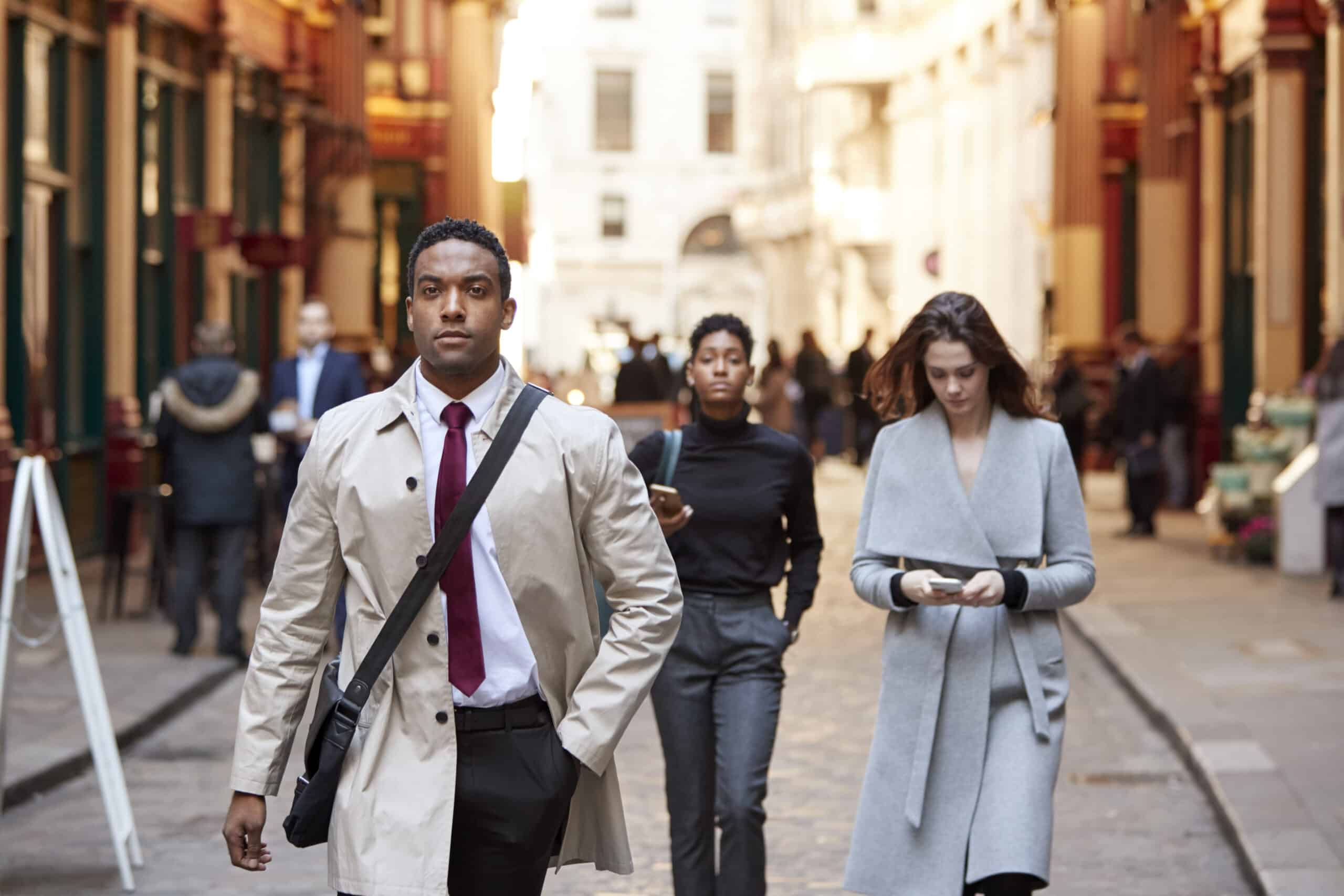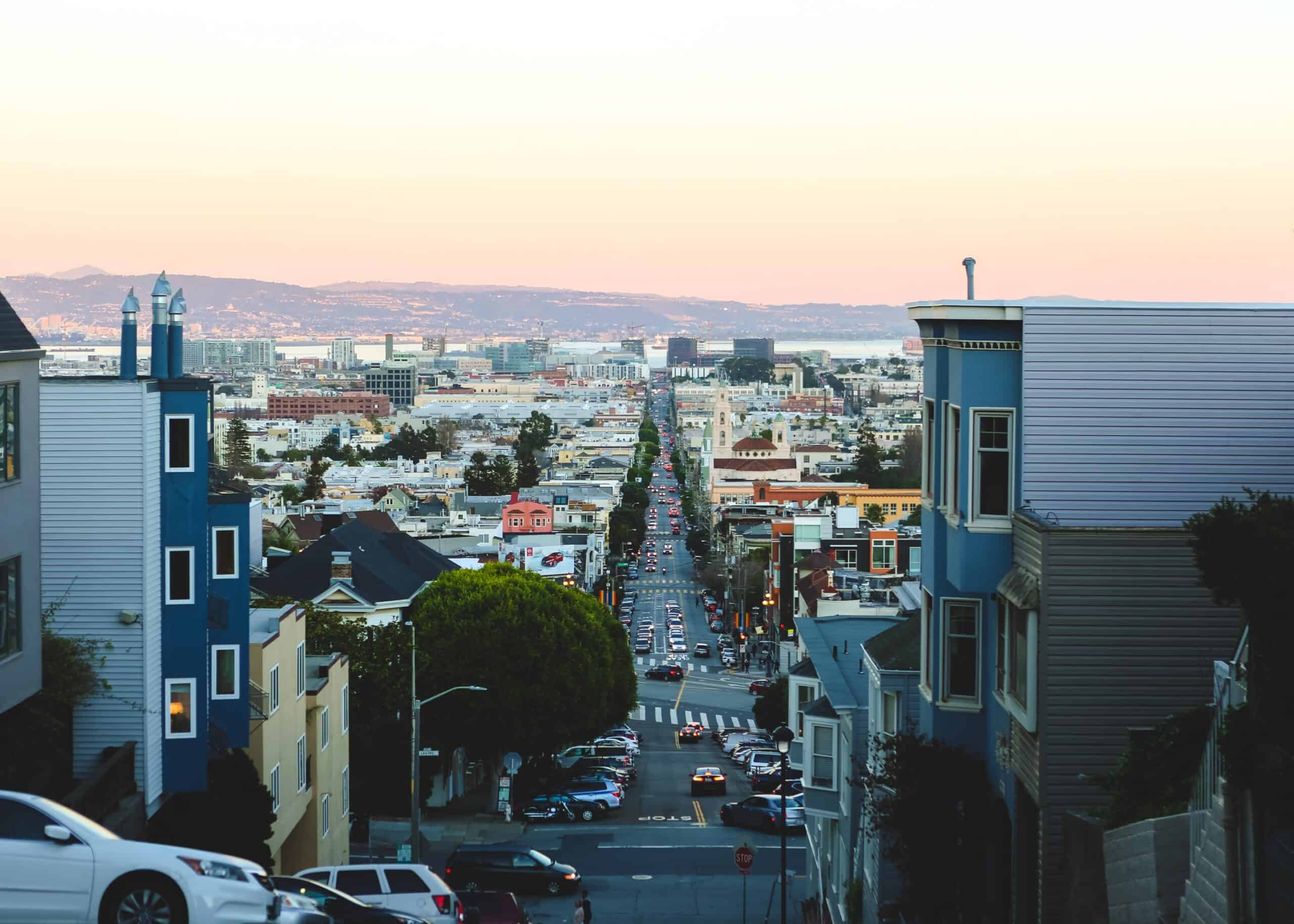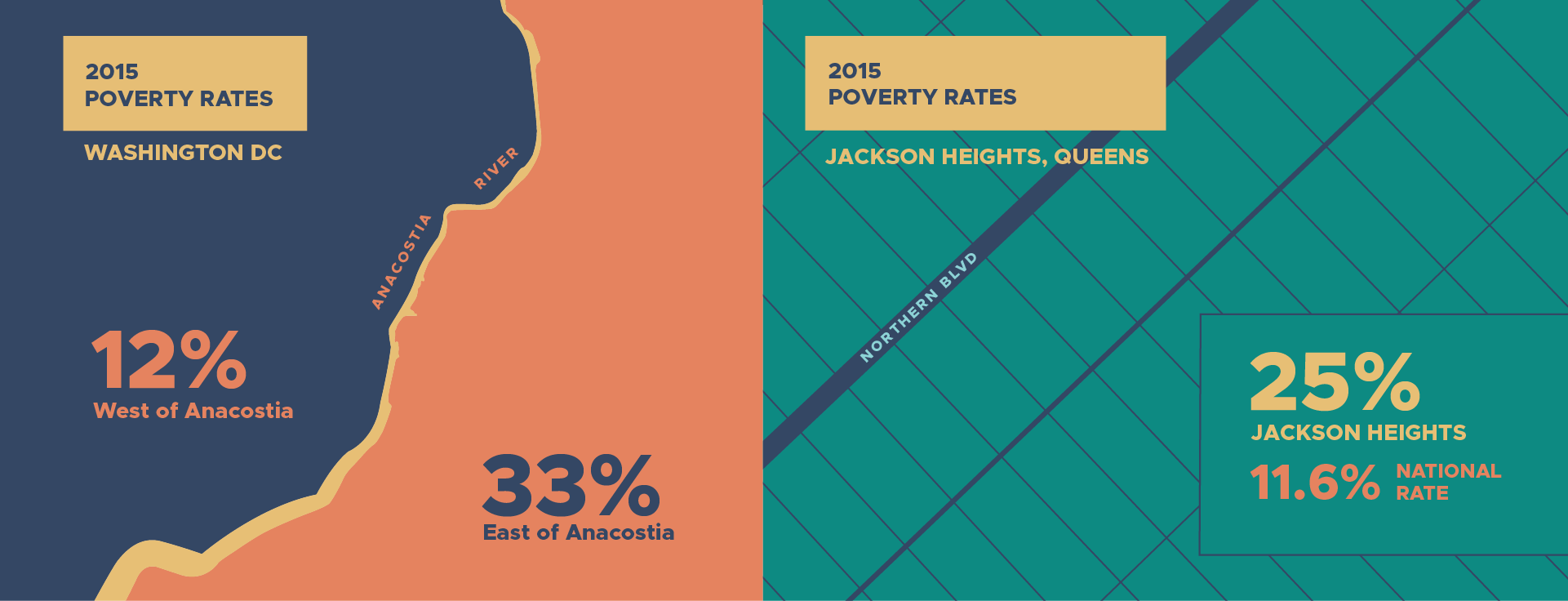Old Enough! Is a Japanese TV series that follows young children running their first errand alone. In the first episode of season two, we saw 5-year-old Ken travel to his neighborhood grocery store in Western Tokyo. His mission, handed down from his mother, was to buy yakisoba, bean sprouts, and curry bread. The series is a mild thrill for an audience rooting for the protagonist. Will young Ken remember what he needs to buy? Can he navigate the streets alone?
American commentators have been quick to point out that such a show could never work in the United States. Naomi Fry of the New Yorker writes that, for children in the US, “the world here is largely seen as something that should be watched out for rather than embraced.” Indeed, Japanese children are given much more freedom than their American counterparts, and it is common to see them traversing their cities alone. American children make less than 35% of their weekday trips alone, compared to more than 85% in Japan. However, the reason American children don’t run their own errands goes beyond culture. It is the consequence of a deliberate policy choice to build dangerous cities.
The policies needed to bring Japanese streets to America’s cities are not a mystery. Improve public transit, build sidewalks, incentivize mixed-use zoning, remove parking, and narrow roads, increase housing density, and encourage walking. These are the principles underpinning what has come to be known as the New Urbanism Movement, and they reflect a longer tradition of urban activists fighting for safe, mixed-use, walkable neighborhoods. However, despite knowing what works, America’s cities remain woefully dangerous and car-dependent. Compared to Japan, even the idyllic streets of Western Europe appear dangerous. In 2021, Japan experienced just 2.24 traffic fatalities per 100,000 people compared to 4.5 in the European Union (America saw 12.7 deaths, nearly 6 times more than Japan).

The battle to rebuild the Great American Pedestrian City is as much a political one as a technical one. While we know what works, the components of an effective city are often stymied by reactionary lobbies. Likewise, well-intentioned municipal planners often apply good principles haphazardly and without context. In a policy domain that feels stuck in a Sisyphean rut, a new buzzword has emerged: the 15-minute city.
The 15-Minute City
There is no such thing as a new idea. It is impossible.
– Mark Twain
The 15-minute city is best described as a new slogan for old ideas. It was introduced in a 2021 paper by Carlos Moreno, a professor and urban planner at the Sorbonne (although Moreno had informally discussed the idea prior to his paper). However, versions of the term have existed before Moreno. Melbourne, Australia, and Portland, Oregon had already referenced the “20-minute neighborhood” as far back as 2008. The underpinning ideas of the 15-minute city are also not novel. Moreno proposed that we design cities into clusters of dense neighborhoods or “cities,” where residents can fulfill the daily needs of life – work, commerce, healthcare, education, and leisure – within a 15-minute walk or bike ride from their homes. The concept borrows from the classic urbanist playbook, which advocates for walkability, density, and localism. Moreover, 15-minute cities have already existed for centuries in places that built cities before the automobile.
If 15-minute cities are just old wine in new bottles, why have they become so prominent in the urbanist news cycle? Part of its appeal comes from the pandemic. As lockdowns forced people to restrict their movements, the deficiencies of our neighborhoods became apparent. Those of us without a car found it difficult to reach daily amenities amidst social distancing mandates and reduced public transit service. To cope, municipal and civic leaders built “micro-infrastructures,” such as pop-up bike lanes, temporary pedestrianized roads, and streateries. For instance, many cities saw a growth of outdoor “micro-groceries” operated by restaurants, which helped reduce crowds in indoor supermarkets. These changes allowed people to reimagine what their cities could be, and as the pandemic wound down, prompted a debate on whether we should return to “normal.” The mayor of Paris Anne Hidalgo, who is one of the most vocal advocates for 15-minute cities, declared in 2020, “It is out of the question that we let ourselves get invaded by cars and pollution.”

The Urbanist Dissent
The 15-minute city is not without its opponents. The concept has been caught in the crosshairs of the extreme right, which has cast the idea as an authoritarian plot to restrict freedom. However, while it is surprising that a seemingly benign urban planning concept has turned into the latest conspiracy theory, I’m even more surprised at how strongly urbanists have turned against the idea. In a recent article, my colleague Matthew McCartney argued that 15-minute cities will exacerbate inequality by further fragmenting labor markets. He wrote that 15-minute cities will “lock-in prosperity for some,” most notably the high-earning creative class, and confine the poor to low-productivity urban bubbles with few economic opportunities. McCartney is not alone in his skepticism. Harvard urban economist Ed Glaeser called the idea a “dead end which would stop cities from fulfilling their role as engines of economic growth,” and urban planner Alain Bertaud warned that if the 15-minute city were taken seriously, “an initially laughable utopia could gradually turn into a petty tyranny.” These comments form part of a longer list of urbanist critiques against 15-minute cities, ranging from Matt Yglesias to the Financial Times and Bloomberg.
The urbanists are decidedly wrong.
By their own admission, 15-minute cities are not novel. McCartney called it “a pithy new slogan attached to an old concept,” while others have characterized it as a mere marketing gimmick. Under the leadership of mayor Anne Hidalgo, Paris has become the poster child for 15-minute cities. Yet, as numerous critics like Bertaud have noted, Paris’ winding streets and medieval fabric already qualifies it (and most of Europe) as such centuries before this newest fad. The 15-minute city is indeed just another manifestation of walkability, localism, and mixed-used neighborhoods. These principles are the bedrock of the inclusive urbanist movement, so I am left wondering why urbanists have attacked the concept while simultaneously acknowledging that it is a rebranding of uncontroversial good urban policies.

The urbanist critique centers around urban access and equality. Critics see 15-minute cities as a policy to fragment cities into small villages where residents can access all their daily amenities and activities within a 15-minute walk. While this makes things more convenient for residents, it contradicts the economic and social rationale for urban agglomeration. Cities exist to bring people together so that they can interact and innovate. A 15-minute walking radius could not sustain the population and space needed to achieve agglomeration benefits. For instance, Yglesias says it would be impractical to give each 15-minute area its own university, multinational corporation, opera house, and specialized medical facility. These firms would also need to draw from a diverse labor pool that requires reaching beyond the immediate 15-minute area. Cities need to function as an integrated urban region, where different neighborhoods can settle into specialized functions and draw from the resources of the urban periphery.
Critical urbanists also argue that while 15-minute cities may make sense in Europe, they cannot be transplanted to North America. Jay Pitter fears that 15-minute cities will exacerbate existing racial segregation hardwired into the American urban fabric. Glaeser is concerned that 15-minute cities will limit the mobility of low-income children by confining them into segregated neighborhoods where they are not exposed to better opportunities: “I am very worried that a focus on enabling upper-middle-income people to walk around in their nice little 15-minute neighborhood precludes the far larger issue of how we make sure our cities once again become places of opportunity for everyone.” These concerns are reflected in the demographics of urban politics, where pro-walkability activists struggle to diversify their ranks with low-income people of color.
These criticisms come from a hyper-literalist reading of a well-intentioned concept.
15-minute cities do not mean that we need to literally conduct all our activities within a 15-minute walk, and few (if any) 15-minute city proponents think jobs need to literally be within a 15-minute walk. The framework would allow us to travel further for work or specialized amenities and does not diminish the role of intra-urban public transportation. Likewise, nothing restricts the framework to a literal 15-minute area, as opposed to 16-minutes or 17-minutes. In fact, Moreno introduced it as a “flexible framework” akin to Capasso Da Silva’s “20 Minute City Model.” In a 2020 interview with the Financial Times, Moreno further clarified, “we don’t want to oblige people to stay in the 15-minute district. We don’t want to recreate a village.”
15-minute cities simply mean that we “could” live in a 15-minute area if we wanted; Moreno wrote that his framework aims to “allow those seeking alternative lifestyles, away from the automobile dependent cities, to access almost [all] urban services and amenities within walkable and biking distance.” This would allow the elderly, the young, the disabled, and the otherwise 13% of driving aged Americans who do not have driver’s licenses to live more enjoyable lives. It would be more inclusive of the 8% of Americans with visual impairment who may struggle to navigate public transit. It would give the 24.4 million children aged 6 to 11 in America the same freedoms enjoyed by their Japanese counterparts.
Beyond definitional quibbles, there is a legitimate concern that 15-minute cities may not be equitably distributed, especially in the American context. Perhaps this is the true underlying issue critical urbanists have. They are correct in pointing out that dense, walkable neighborhoods in Europe and the United States are concentrated in high-income areas. Using mobile phone data, Glaeser and his co-authors confirmed that the rich are more likely to live in 15-minute cities. They are also accurate in highlighting that high-productivity jobs are clustered in these same walkable neighborhoods, and low-income residents living in sprawled areas are forced to endure long commutes to reach opportunities. However, these are criticisms of implementation, not theory. 15-minute cities can be designed as well-integrated neighborhood clusters and various policies can ensure residents are not displaced by urban development. Rather than fearing theoretical negatives and abandoning the concept, urbanists should work harder to build effective 15-minute cities.

Even if we are pessimistic about implementation, inequitably distributed 15-minute cities would still benefit both high-income and low-income residents more than the status quo. Concentrating economic opportunities in core walkable neighborhoods, even if it leads to high property prices, would make it easier for the poor to plan their commutes. This is because it allows urban planners to design transit networks that efficiently funnel workers into key hubs, and it agglomerates opportunities in a dense area as opposed to spreading them across an entire region. Such is the raison d’être for central business districts, and it fosters economic productivity and welfare gains. The alternative – 15-minute cities for nobody – would force the urban poor to incur high commuting costs as they scramble to various parts of a city. Paris’ deputy mayor David Belliard goes further by highlighting the gender inequities of the status quo: “fifty percent of public space is occupied by private cars, which are used mostly by the richest, and mostly by men, because it’s mostly men who drive, and so in total, the richest men are using half the public space.”
Another implementation concern may be that if we prematurely transform low-income neighborhoods into 15-minute cities, it would “trap” the poor in low-productivity urban bubbles, since these neighborhoods may not have the prerequisite economic development needed to sustain high-quality amenities. Research from Raj Chetty highlights that connecting low-income residents to high-income social networks is the best predictor of upward economic mobility. This cannot happen if the poor do not venture out of their neighborhoods into more productive areas. However, it is unclear how critical urbanists would translate this into policy. Should we avoid 15-minute cities by deliberately making low-income neighborhoods less convenient just so that their residents are motivated to venture into rich ones? This would be, as Bertaud phrased it, “a petty tyranny.”
I am also skeptical of the premise that low-income neighborhoods can be “prematurely” turned into 15-minute cities. Dense, walkable planning is the blunt policy tool needed to spur local economic development and the expansive litany of supporting empirical evidence borders on dogma. Poor children from walkable neighborhoods are more likely to escape poverty as adults, residents of walkable communities have lower risks of obesity and diabetes, and walkable streets are more economically productive. Unsurprisingly, it was the 15-minute cities of New York City (Harlem), Chicago (Bronzeville), and Washington, DC (Shaw) that gave birth to the Black Renaissance and brought newly freed slaves into the burgeoning black middle-class of the 1920s.
Although the urban decay of the 1980s saw the death of the prospering inner-city black neighborhood, minorities and low-income residents of contemporary American walkable communities still fare much better than their counterparts in comparable sprawled neighborhoods. Suburban poverty, which is increasingly outpacing urban poverty, exists in a policy blindspot; spatial fragmentation makes it difficult for social services to target those most in need, leaving the suburban poor worse off. Of the 20 largest urban economies in America, the five most affordable cities for households below the poverty line are Philadelphia, Miami, New York City, Boston, and Baltimore. These are some of the country’s most walkable cities. Even San Francisco, the emblem of American gentrification and excessive wealth, ranks as the 8th most affordable big city for the poor. The least affordable are San Jose, San Diego, Dallas, Houston, and Atlanta – some of America’s most car-dependent cities.

Behind the long list of statistics is a corroborating intuition borne from experiencing America’s most effective urban neighborhoods firsthand. New York City is the densest cluster of 15-minute cities in the Western Hemisphere. Whereas most American cities have at least one small 15-minute city called “downtown,” New York is a nearly continuous 300 square mile patchwork of 15-minute cities from its Manhattan core to the far-flung neighborhoods of Brighton Beach, Brooklyn, Flushing, Queens, as well as its edge cities like Hoboken, New Jersey.
Jackson Heights, Queens, sometimes known as the “most diverse neighborhood in the world,” had a 2018 poverty rate of 25%, more than double the 2018 national rate of 11.6%, and a high school attainment rate of just 30%. This relative deprivation, however, has not prevented the neighborhood from becoming a fully-fledged 15-minute city. Roosevelt Avenue, the main road crossing the neighborhood, is densely packed with restaurants, groceries, gyms, amenities, and street life. This story is repeated throughout New York City in neighborhoods like Flushing (25% poverty rate), Brighton Beach (24% poverty rate), and the unfortunately gentrifying Astoria (18% poverty rate). The most compelling part of New York City is that its outer boroughs are not distanced low-income bubbles. Rather, they are vibrant “cities” with amenities that draw in the high-income residents of Manhattan. Jackson Heights has a reputation as the best place for a food crawl in the city. Flushing has surpassed Chinatown, Manhattan for hipster foodies chasing authenticity.

The economic diversity of these neighborhoods, which has high-earning Wall Street bankers coexist with immigrant taxi drivers, further keeps them resilient. Despite decades of headlines lamenting New York’s gentrification, the city still manages to maintain deep-rooted working-class neighborhoods as other gentrifying cities like San Francisco and Washington, DC struggle to do so. On a recent trip to Astoria, I paired an $18 upscale bowl of ramen with a plate of $2 tacos across the street. Although NYC has a high cost-of-living reputation, all New Yorkers are familiar with the suspiciously cheap, albeit limited, groceries sold in the city’s network of independently owned bodegas and halal butchers. New York City is the only American city I’ve visited in the past year that feels as vibrant as it did before the pandemic.
As a contrast, consider Washington, DC. In DC, social classes are divided along the Anacostia River. The 2015 poverty rate east of the river was a staggering 33% – three times the national rate – while the poverty rate west was only 12%. The urban geography east of the river is also much less walkable. The roads are wider, the speed limits are looser, and the amenities are distanced. While DC has an overall walkscore of 77 (Matt Yglesias’ Logan Circle neighborhood has a walkscore of 97), the low-income neighborhoods of Anacostia and Deanwood have scores under 60. Anacostia is a well-known food desert, where most residents are not within walking distance of a grocery store. This is in a city where 37% of households do not own a car, the highest in the nation outside of the NYC metro area. Most wealthy and middle-class Washingtonians have no reason to go east of the river, since there are few worthwhile amenities. When low-income neighborhoods are “15-minute cities,” like Jackson Heights and Flushing, they attract the high-income social networks that Raj Chetty and Ed Glaeser say are integral to upward economic mobility for the poor. When they are sprawled like Anacostia and Deanwood, they remain in poverty.
Reframing Urbanism
Much of the evidence cited has been generated by the same urbanists who are critical of 15-minute cities, a mismatch that is hard to reconcile. Matt Yglesias however, makes a more interesting argument against branding. Rather than exclusively attacking the substantive policies, he also criticizes 15-minute cities as a poor framing of uncontroversial urban principles. Outright, I do believe that “15-minute cities” is an effective branding. I agree with the World Economic Forum’s Lisa Chamberlain, who marveled at both the surprising stickiness of the slogan (still making headlines years after it was coined) and its power to motivate action in the progressive cities of Europe. While there is nothing conceptually new about what 15-minute cities promise, it reframes our urban priorities. Facing a range of urban problems in the West, urbanists have prescribed a basket of nebulous policies that include buzzwords like “walkability,” “density,” “local accountability,” and “inclusivity.” 15-minute cities, on the other hand, formulate a concrete and immediate vision. Chamberlain wrote, “the 15-minute city went from a ‘nice-to-have’ to a rallying cry.”
15-minute cities are the foundation for good urbanism; not only is it a good final vision, but it is also a necessary first step to achieving what many urbanists hope. Concerned about intra-urban mobility for the poor, Ed Glaeser wrote, “I am only interested in urban planning concepts that fundamentally solve that problem, and the 15-minute city seems likely to make that problem even worse.” On the contrary, 15-minute cities are the solution. In Washington, DC, the neighborhoods east of the Anacostia River have terribly low mobility. It takes residents of Deanwood the same amount of time to commute eight miles into downtown DC by public transit as it does for residents of Vienna, Virginia to commute 20 miles into the city. Glaeser may propose that we expand bus networks into Deanwood to increase urban mobility. While this would certainly benefit residents, it would not lead to the substantial urban transformation hoped for by urbanists. Deanwood is still sprawling and dangerous for pedestrians. Connecting it to the wider city would not draw in productive high-income social networks in the same way Jackson Heights has been able to. Even if we can use better urban mobility to connect residents of Deanwood to high-value opportunities, they will likely leverage their upward mobility to move into safer neighborhoods. Turning the area into a 15-minute city is the necessary first step to revitalization because 15-minute cities (even low-income and high-crime ones) are worth saving. Low-income sprawled neighborhoods, on the other hand, are places to escape.

The problem is better illustrated by examining the high-speed rail debate in the United States. Urbanists have long advocated for the federal government to fund the development of high-speed rail between populated cities. What the prescription misses is the last mile. If I take a train from Washington, DC to Nashville, I will be dropped off in a car-dependent city hostile to pedestrians. This would force me to incur additional transit costs to travel between the train station and my destination. Before Nashville can be a viable attractor of both low-income talent and high-income social networks, it needs to develop more 15-minute cities. Before high-speed rail can be a viable national transit mode in the United States, we need more 15-minute cities.
The logic extends to almost every urbanist policy. Crime? Jane Jacobs said that to reduce urban crime, “there must be eyes upon the street, eyes belonging to those we might call the natural proprietors of the street.” By increasing walkability, 15-minute cities increase pedestrian visibility. Housing affordability? 15-minute cities include the restructuring of land use to achieve the resident density needed to sustain a 15-minute radius of daily amenities. Pedestrian safety? A key priority for 15-minute city proponents is to reduce car dependency, which has led some jurisdictions in the United Kingdom to pair them with a Low Traffic Neighborhood scheme.
Rather than prescribing technical solutions to various urban problems, the pragmatism of the 15-minute cities slogan is its flexibility. All it demands is that a particular neighborhood becomes accessible within a 15-minute radius, and the details are left to local stakeholders who better understand the context. In turn, the assumption is that all the down-the-line urban goals – intra-city mobility, crime reduction, housing affordability, food access, etc. – will naturally arise after we create an effective patchwork of 15-minute local markets. This is localism, grassroots planning, community involvement, participatory policymaking, and any other buzzword for building communities from the ground-up.







